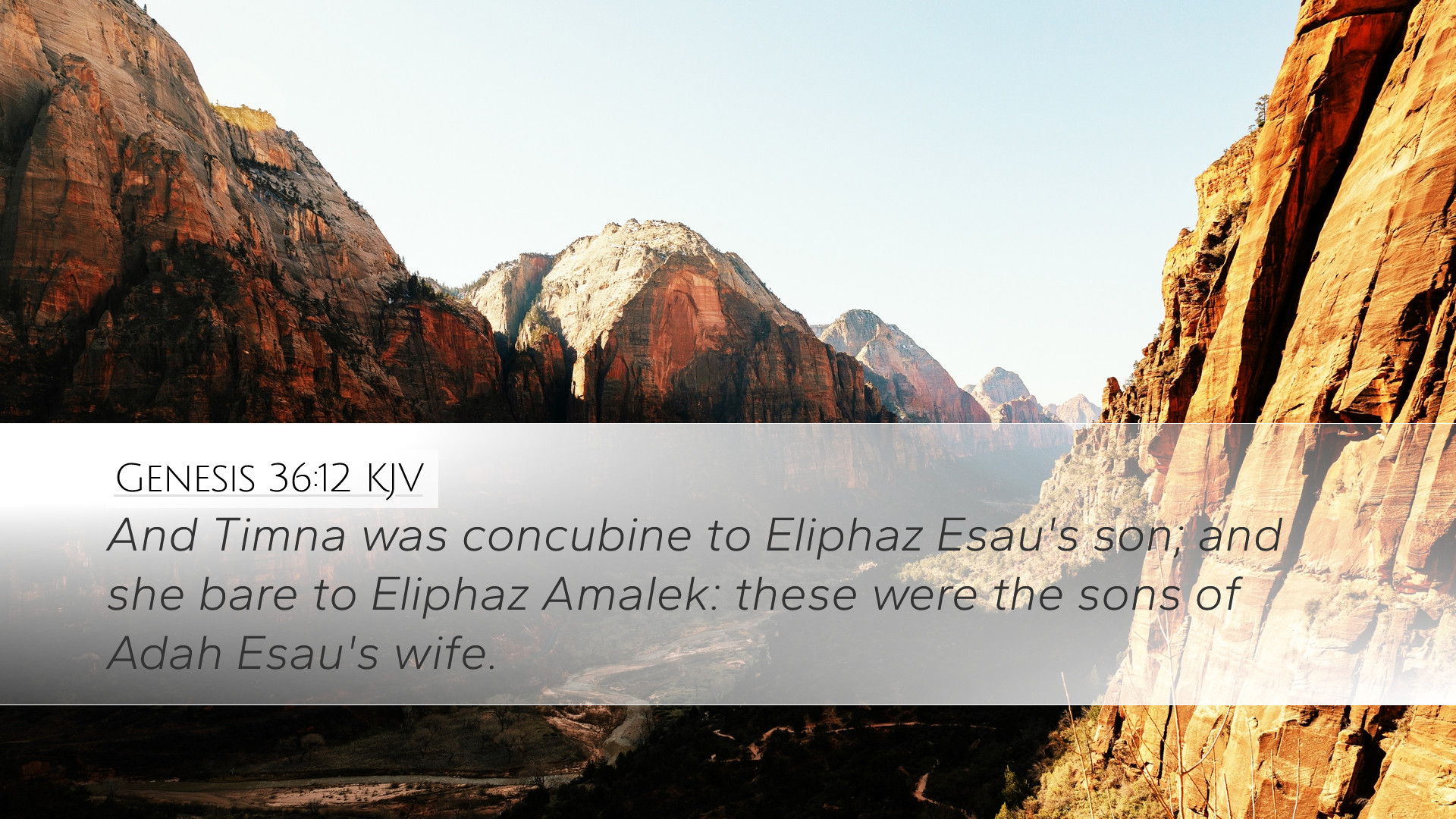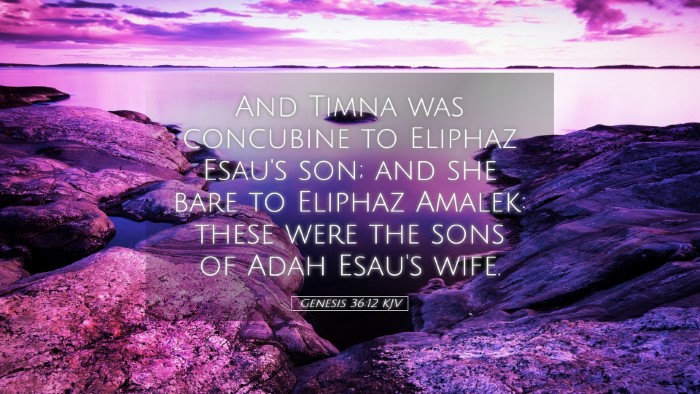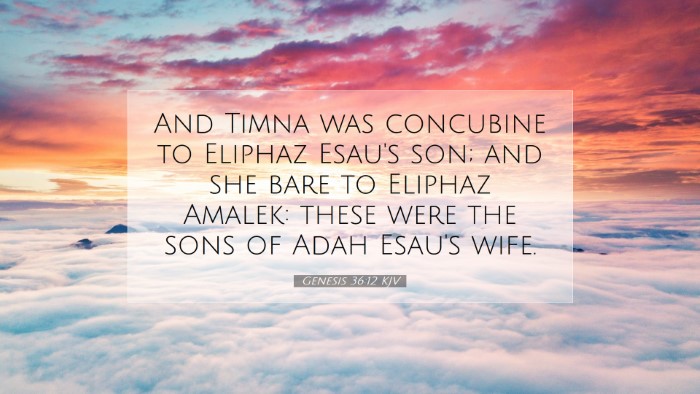Commentary on Genesis 36:12
Verse Context: Genesis 36:12 reads, “And Timna was the concubine to Eliphaz, Esau's son; and she bore to Eliphaz Amalek: these were the sons of Adah, Esau's wife.” This verse is part of the genealogical records concerning the descendants of Esau, which hold significant implications for both historical understanding and theological reasoning.
Overview of Genesis 36
This chapter serves to provide an account of the generations of Esau, who is also known as Edom. It emphasizes the concept of lineage, which was crucial in Hebrew culture, particularly in establishing tribal identities and rights to land. Each name mentioned reflects more than mere ancestry; it embodies the future of nations and foreboding conflicts. The mention of Timna and Amalek introduces a notable line directing attention to future interactions between the Israelites and Edomites, especially concerning the Amalekites.
Exegesis of Key Elements
Timna
Timna is presented as a concubine of Eliphaz, showcasing the customs of familial relationships in that period. The mention of her as a concubine rather than a wife speaks to the stratified nature of relationships and property within the biblical narrative. Commentators note that while concubinage was accepted in ancient cultures, it also foreshadowed complexities in familial dynamics.
Eliphaz
Eliphaz, as the son of Esau, occupies a significant place as a progenitor of a lineage that would later interact with Israel. Understanding his role allows scholars to engage with the overarching narrative concerning the rivalry between the descendants of Jacob (Israel) and Esau (Edom). Matthew Henry highlights Eliphaz’s prominence amongst Esau’s children as an indicator of respectability in origin.
Amalek
Amalek, the son of Eliphaz and Timna, becomes a central figure in later biblical history, as the Amalekites are known for their perpetual antagonism toward Israel. Albert Barnes emphasizes the prophetic foresight of Amalek’s lineage, noting that they would become a symbol of hostility against the chosen people. The mention of Amalek here serves as a prelude to his well-documented role in conflicts throughout the books of Exodus and Deuteronomy.
Theological Implications
The genealogy in Genesis 36 serves not merely as historical record but as theological commentary about divine promise and covenant. In tracing Esau’s lineage, the scripture juxtaposes God’s covenant with Jacob’s descendants against that of Esau’s line. Adam Clarke remarks on the significance of this lineage as attempting to provide clarity on the ultimate fulfillment of God’s promises through the lineage of Jacob, setting the stage for the eventual unity of nations under God’s sovereignty.
Genealogical Significance
The genealogy reflects the importance of following the line of descent for identity formation among ancient peoples. Each name carries historical weight, marking the interplay of tribes and nations. Pastors, students, and theologians can glean insights about God’s providential hand in the course of history, recognizing that seemingly mundane genealogies often reveal divine narrative threads interwoven within their lineage.
Lessons for Today
- Understanding Family Dynamics: The complexities and roles within families—reflected in Timna’s position—encourage modern readers to consider the implications of their relational dynamics.
- The Sovereignty of God: The struggle between Jacob and Esau highlighted by their offspring encourages reflection on God’s divine providence and plans despite human conflict.
- Identity and Heritage: Today's believers can take lessons from the importance of heritage and its shaping role in identity, urging them to view their spiritual lineage with esteem.
Conclusion
Genesis 36:12 encapsulates rich meaning intertwined with the broader narrative of scripture. Through Timna, Eliphaz, and Amalek, we see a microcosm of God’s overarching intent and the consequences of human action on divine principles. For pastors, students, and theologians, this verse signifies that genealogies echo far beyond mere history; they resonate with the realities of faith, identity, and the ongoing narrative of redemption throughout the Holy Scriptures.


